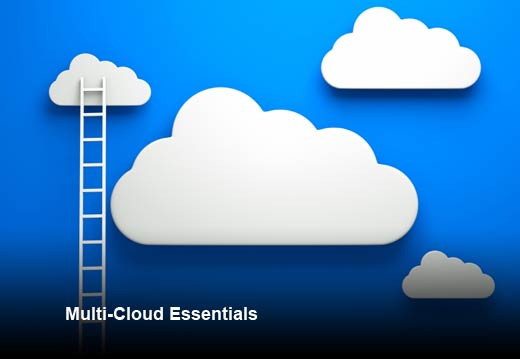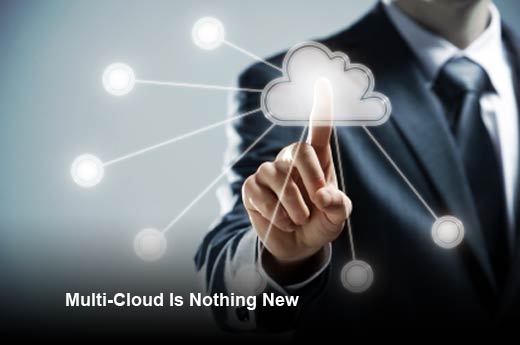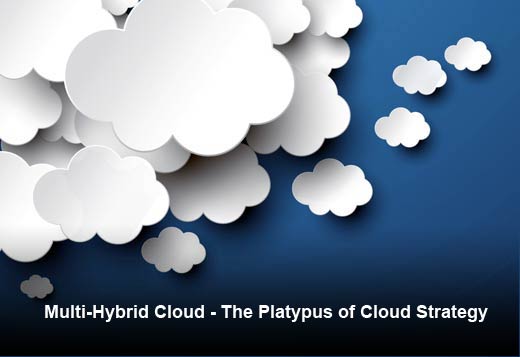For most organizations, it’s no longer a question of if they will use cloud, but rather how to best use the cloud. Cloud is a staple for many enterprise IT strategies and from the looks of things only stands to become more important in years to come. According to Gartner, spending on public cloud servers is expected to grow 16 percent in 2016, despite projections that global IT spending will fall overall. On the whole, the cloud market is becoming increasingly crowded and increasingly complicated, often leaving enterprises with the paradox of choice.
While AWS, Azure and Google duke it out for dominance in the public cloud market, numerous smaller private or enterprise tech giants are developing new cloud offerings, which can make it difficult for businesses to decide where to spend their cloud dollars.
And while many large companies already have a multi-cloud infrastructure in place, smaller enterprises and even SMBs are also beginning to consider use of a multi-cloud strategy, in which multiple cloud solutions are leveraged for a more complete and purpose-built cloud architecture. In this slideshow, Avere Systems, a provider of enterprise storage for the hybrid cloud, outlines seven essentials that businesses should be aware of when considering a multi-cloud strategy.
Multi-Cloud Essentials
Click through for seven essential points businesses need to know when considering a multi-cloud strategy, as identified by Avere Systems.
Multi-Cloud Is Nothing New
Historically, enterprises have always leveraged multiple vendors of the same technology. Just like enterprises will use different storage vendors for different needs, or will use several security vendors to form a complete storage strategy, multi-cloud allows enterprises to reap the best of a variety of cloud providers and services. Multi-cloud is yet another example of the fact that no single vendor can be everything for everyone.
Multi-Cloud vs. Hybrid Cloud
Before diving into the specifics around multi-cloud, let’s differentiate it from hybrid cloud. It differs from hybrid cloud in that it refers to multiple cloud services rather than multiple deployment modes. Hybrid cloud is a strategy in which the business retains computational assets and keeps some (if not all) of its data in its own data center. Multi-cloud is simply when a business has an affiliation with two or more cloud vendors.
Multi-Cloud Increases Competition
With multi-cloud, enterprises can increase competition between providers to fuel service improvements and price breaks. Using multiple cloud vendors can provide insurance against declines in quality as well as unfavorable changes in pricing structure. Additionally, cloud vendors will be continuously innovating and attempting to outdo their competitors. Having a stake in several cloud providers increases the likelihood a customer may take advantage of new innovations.
Pro: Avoiding Data Gravity
Additionally, adopting a multi-cloud approach helps enterprises avoid “data gravity,” a phenomenon where more and more services and applications are attracted to this data as it accumulates. By keeping data in different clouds, enterprises maintain a type of “insurance policy” over their primary cloud vendors. Additionally, enabling technologies for multi-cloud environments, like scalable cloud gateways, can help offset avoid difficult and costly data migration.
Con: Cloud Fatigue
Customers attempting to leverage multiple cloud providers could find themselves spending inordinate amounts of time ensuring data is available in the most relevant cloud provider (based on costs, features, workload locations, and so forth). Data consumption patterns could cause undesirable amounts of data migration between clouds, and this in turn could increase costs. Additionally, the coordination of cloud assets could cause increased burden on the staff managing cloud providers, and without the appropriate amount of automation could end up being very expensive.
Con: Increased Ownership Costs
Due to the nature of multi-cloud, OpEx costs can increase with every new cloud service. There is no specific API standard in cloud. Each cloud provider, though they offer the same service, will not offer the same API access. This means that customers must create operational infrastructure for each additional cloud provider they use. This is yet another reason that enterprises considering implementing a multi-cloud strategy must carefully consider each cloud service based on the services it provides and how it will serve a particular need for the business.
Multi-Hybrid Cloud
Of course, multi-cloud and hybrid cloud are not mutually exclusive. In fact, a multi-hybrid cloud strategy can be a very effective way to leverage multiple clouds while avoiding its pitfalls. Enterprises can maintain flexibility and keep migration costs down by using a strategy in which data is stored on-premise and then farmed out to the different clouds for different workloads. Again, a scalable cloud gateway or hybrid cloud storage provider can help efficiently move data between clouds and on-premises storage for better performance and lower costs.










